Excerpts from Jim Conrad's
Naturalist Newsletter
from the June 5, 2016 Newsletter with notes from a trip in April to the Lacandon Reserver in Chiapas, MÉXICO
ONE-COLORED GONGORA ORCHID
In mid April when I was in the Lacandon community of Lacanja Chansayab in Chiapas's Lacandon Reserve in extreme southeastern Mexico, beside the informal little family campground where I pitched my tent, my Lacandon hostess maintained a shady little spot where she hung orchids among tree limbs and planted colorful ornamentals. The orchids seemed to be species found in the surrounding woods. She must have sprayed the area regularly with a water hose because most of the orchids were flowering, despite it being the heart of the dry season. The one that impressed me most at first didn't look so special. Below, you can see its cluster of broad, lengthwise-ribbed leaves arising from a big ball of white orchid roots:
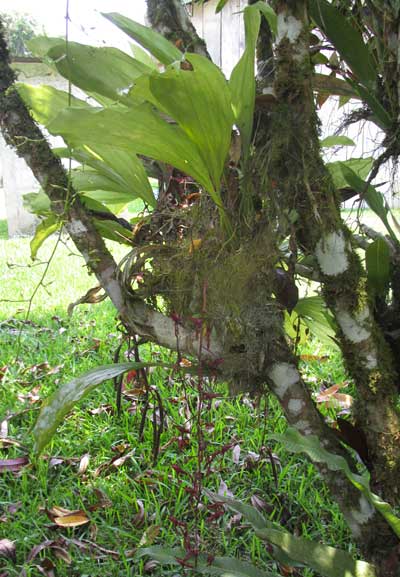
Many orchid species produce "pseudobulbs," which are modified stem sections normally considered to be water-storage structures. Since many other orchid species don't have pseudobulbs, the presence of pseudobulbs is an important field mark to note when you want to identify your orchid. Ours has well developed pseudobulbs -- also strongly ribbed lengthwise -- as shown below:
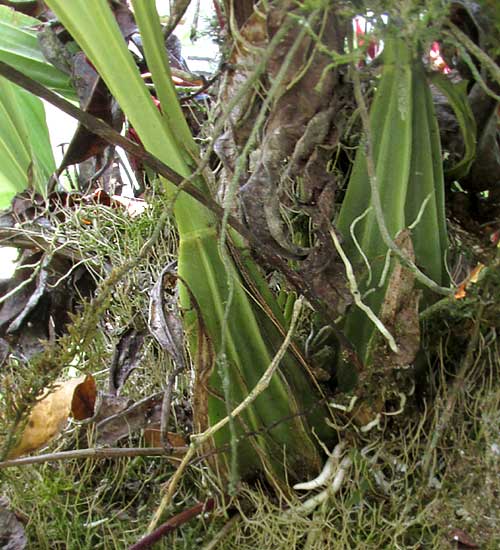
It's the orchid's flowers, though, that grab our attention. They're dark maroon, oddly shaped and hang in 2½-ft-long (74 cm) clusters, as seen below:
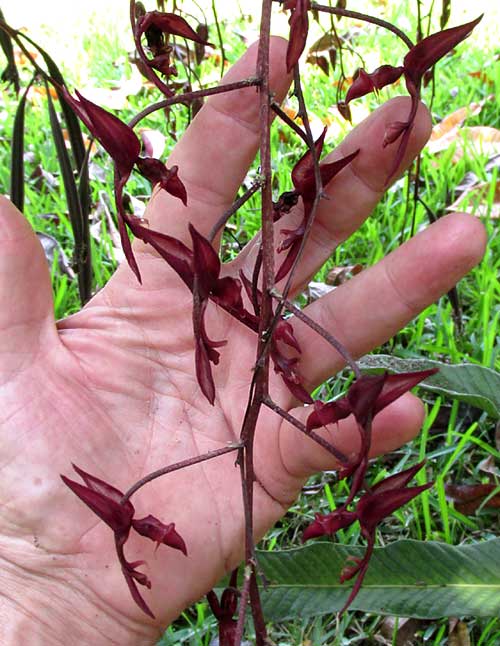
I can't look at the individual blossom without thinking of a flying dragon or maybe one of those Evil Empire spaceships in an old Starwars movie. Below, you can see a flower with its maw sprouting sharp fangs:
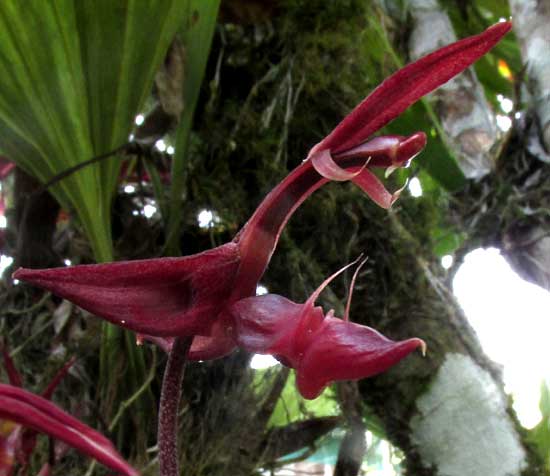
But of course the blossom's maw and fangs are just adaptations to help the blossom get itself pollinated. Pollination is performed by male solitary bees of the Euglossinae family, which are attracted by the blossoms' strong fragrance. One grower of the species describes the odor as just like root beer. We can visualize the bee trying to get to the flower's "throat" pushing aside one or more "fangs," which causes the female part to bend down to receive any pollen masses (pollinia) stuck to the visitor's body, but that's just a guess.
These plants already had succeeded in being pollinated, for some bore fruit pods, shown below:
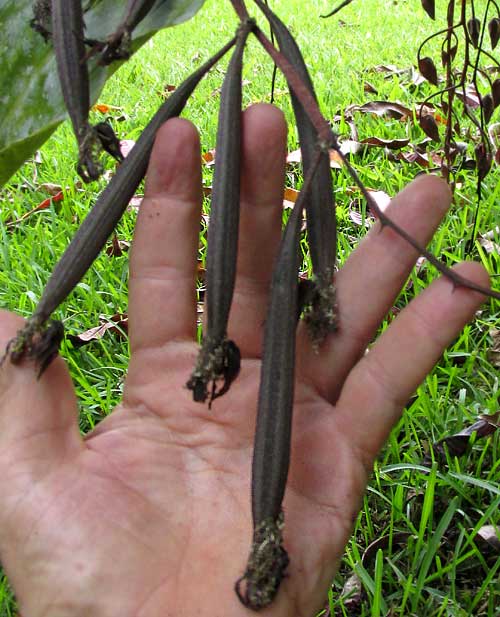
This is GONGORA UNICOLOR, sometimes called the One-Colored Gongora. It lives from southern Mexico and Belize south to Honduras, occupying wet forest types. Researchers have documented Gongora unicolor in Chiapas's Lacandon Reserve before.